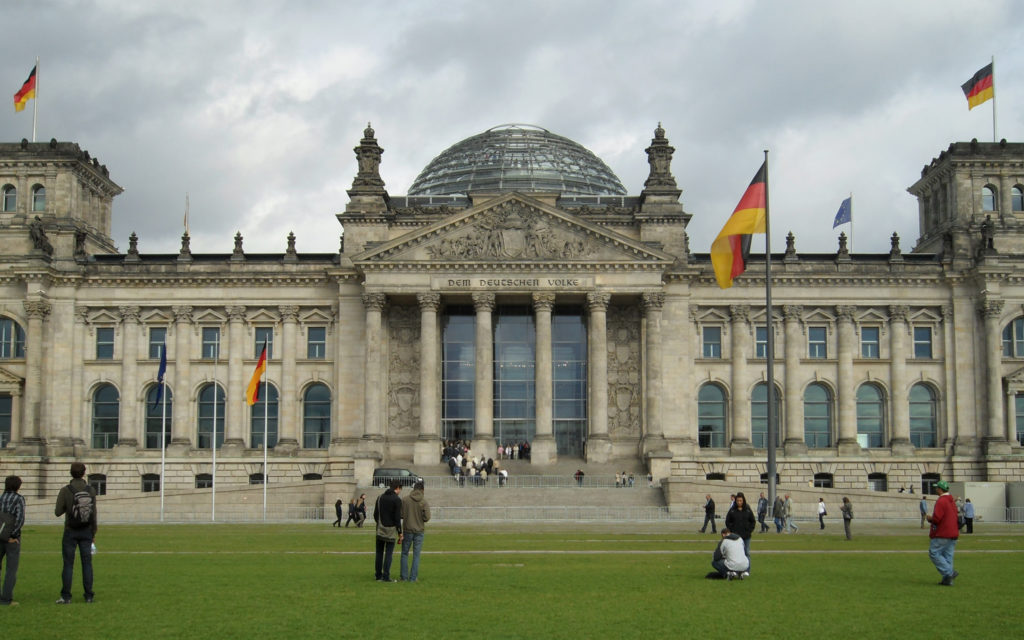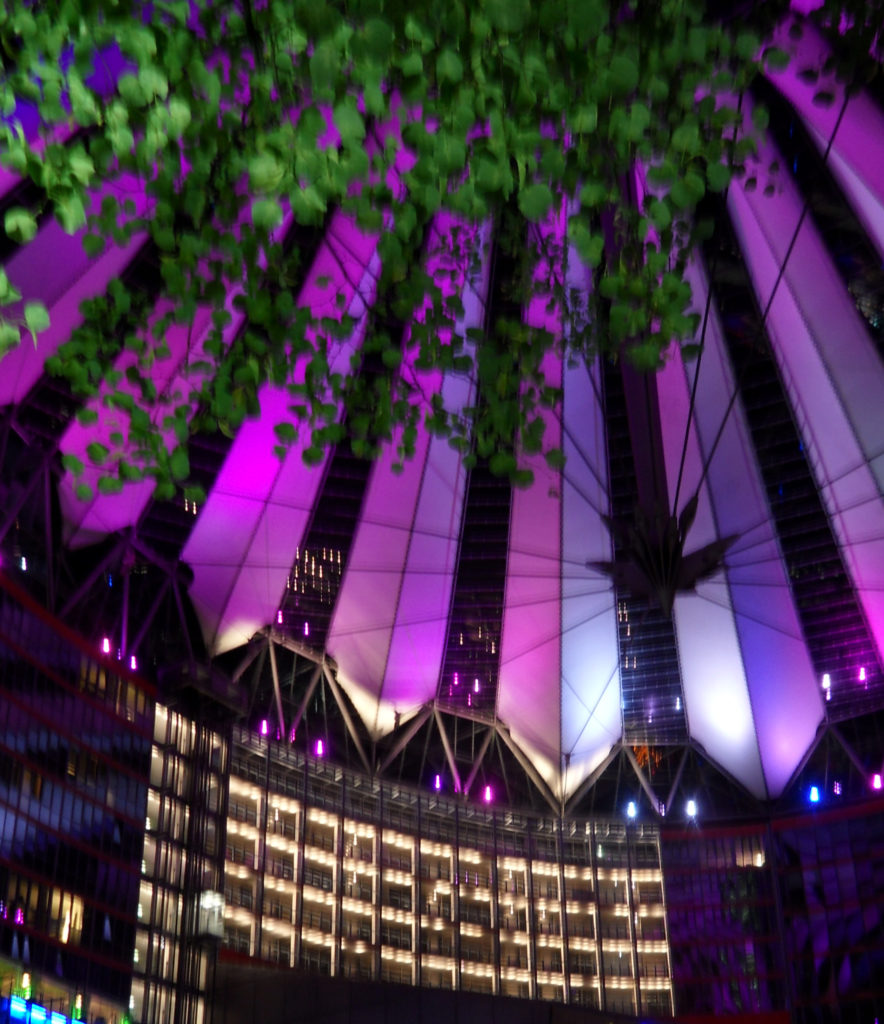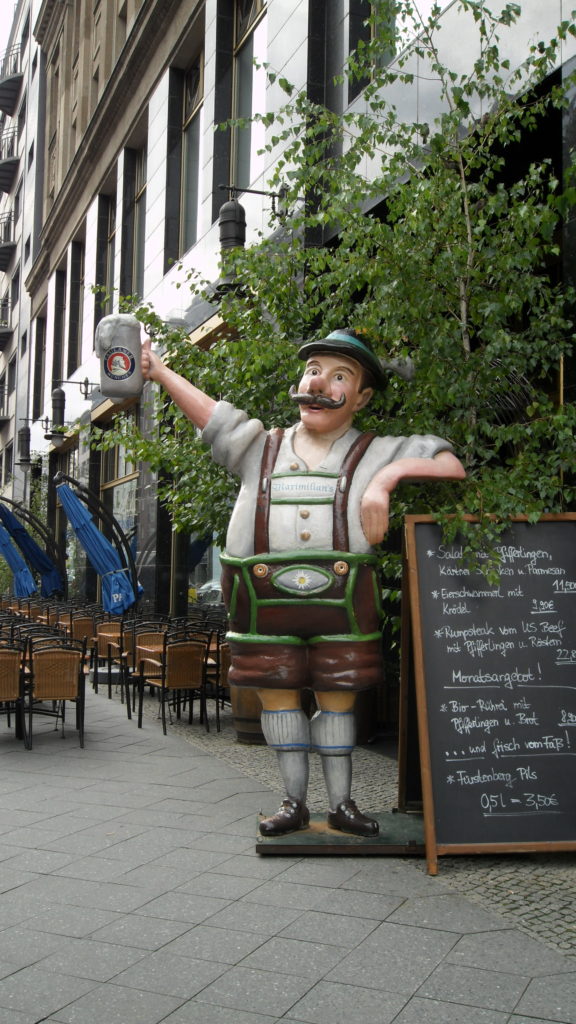Overview Neighbourhoods Attractions Food + Drink Transit
Overview
Big, sprawling, artsy, multicultural Berlin. This European capital city, once divided, has an interesting history of German reunification. The east meets west metropolis is a must for any history lover. As one of Europe’s largest cities, Berlin is a thriving hotspot for arts, culture, and entertainment. With a thriving arts and media sector Berlin offers visual arts and music tourism on a grand scale. You might want to plan an extra day or two to explore this massive metropolis.
Currency
The Euro
Tipping
It is often customary to round your bill to include a small gratuity for exceptional service. A typical 5-10%, often rounded off to the closest whole Euro, is not expected but appreciated.
Language(s)
German. English commonly understood.
Reasons to visit
Culture, History, Music, Independent Art, Clubs
How long to spend
Vacationer: 1 Week
Busy Traveler: 5 days
Travel Addict: 3-4 days
The Neighbourhoods
Mitte is the most central area of Berlin and where you’ll find a majority of the attractions you’re likely to visit during your stay. Because of its large size it’s often further subdivided into additional boroughs. It extends to both East and West parts of the city, which offers a first hand view of a city and country formerly divided. Although Mitte can refer to a larger region of the city, Mitte proper is the smaller, more central area of the larger one of its namesake.

For a glimpse of the former Soviet side of Berlin, head on over to the east neighbourhood of Friedrichshain. No longer the bleek and drab community it once was, today a vibrant and creative area fuelled by an alternative, punk, and counterculture spirit. Former soviet industrial buildings have been converted into techno clubs, street art showcased on what once was an oppressive wall, and many cafes, restaurants, and shops in untraditional settings that go against the grain and feel completely at home in East Berlin. Friedrichshain is home to the East Side Gallery, world-famous techno club Bergheim, and many unique attractions that make Berlin, Berlin.

Just to the west of Friedrichshain lay the equally artsy and trendy Kreuzberg. These two neighbourhoods have much in common that they are often lumped together as Friedrichshain-Kreuzberg. With Kreuzberg also having a strong alternative, punk, and counterculture vibe, this western counterpart strays further away from the Soviet influence. A majorly multi-cultural region of Berlin, Kreuzberg has a large pressence of Turkish immigrants and descendents making it a great spot to get a Turkish Kebap or visit the Turkish market – but more on those in the food + drink section.
Despite being in the centre of the city within Mitte, Berlin’s Tiergarten offers refuge from a busy urban life. Like London’s Hyde Park or New York City’s Central Park, Tiergarten is Berlin’s massive park surrounded by busy urban life. It’s central not only in proximity, but plays a central role in Berliner’s lives as well. The park attracts cyclists and runners looking to up their heart rate, but also attracts visitors with a more leisurely pace in mind by looking for a refuge from the busy city with a picnic or casual stroll. The west end of the park also houses both a large zoo and aquarium making it a great family destination. In the east, cultural attractions such as the Reichstag and Brandenburg Gate act as a gateway into the grand park.
Just past the zoo and aquarium in the west of Tiergarten, lay the affluent neighbourhood of Charlottenburg. The posh shopping district is home to many of the world’s big luxury brands and is often compared to the Paris’ Champs-Élysées. A large concentration of these luxury shops can be found on or nearby one of Berlin’s most famous streets – Kurfürstendamm. The large boulevard runs east-west through the heart of Charlottenburg and is not only destination for high-end shopping, but also contains many hotels, restaurants, galleries, and museums. Charlottenburg offers a very different atmosphere than many other parts of Berlin. The unmistakable affluence and its posh amenities feel very different than many of the alternative, artsy, and independent neighbourhoods that dominate Berlin.
Located just next to/east of Charlottenburg and south of Tiergarten is the lively neighbourhood of Schöneberg. The affluence of shopping district in its neighbour to the west, spills over into this region. The shopping continues with one of Europe’s largest department stores, KaDeWe (Kaufhaus des Westens), only second in size to London’s Harrods. As you continue your journey, you’ll notice lively squares with many outdoor cafes and less touristy areas with locals enjoying life. Schöneberg is also considered to be Berlin’s main gay district, with lots of nightlife suited for the LGBT community

Berlin has many central squares throughout the city. These can be places for large public gatherings, events, and often act as transportation hubs. One of the most popular of which is Alexanderplatz. Located in Mitte, Alexanderplatz connects to the U-Bahn, S-Bahn, other transit, and is a popular spot for shopping and public gatherings. Easily identifiable at a distance, Alexanderplatz features Berlins’ iconic television tower, The Fernsehturm, which dominates the skyline as Berlin’s tallest structure. Alexanderplatz is very central making it a great place to stay during your visit. Walking distance to many attractions and easy access to main transportation lines makes Alexanderplatz a very popular central square.
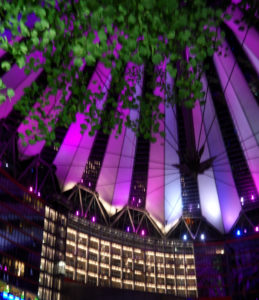
Another popular square, but with a completely different vibe is the unique Potsdamer Platz. The melding of new developments and modern architecture with war-destroyed buildings makes this square very unique in both aesthetic and feel. Although the area is home to many large corporate headquarters including Daimler Chrysler and Sony, this does not dilute the public ownership that is present in this space. In fact, the Sony Center features the most iconic part of Potsdamer Platz – a large glass dome that illuminates vibrant colours at night. Potsdammer Platz is located by the southeast corner of Tiergarten, close to such attractions as Checkpoint Charlie, The Brandenburg Gate, Reichstag, and other central Berlin attractions.
Attractions & Activities
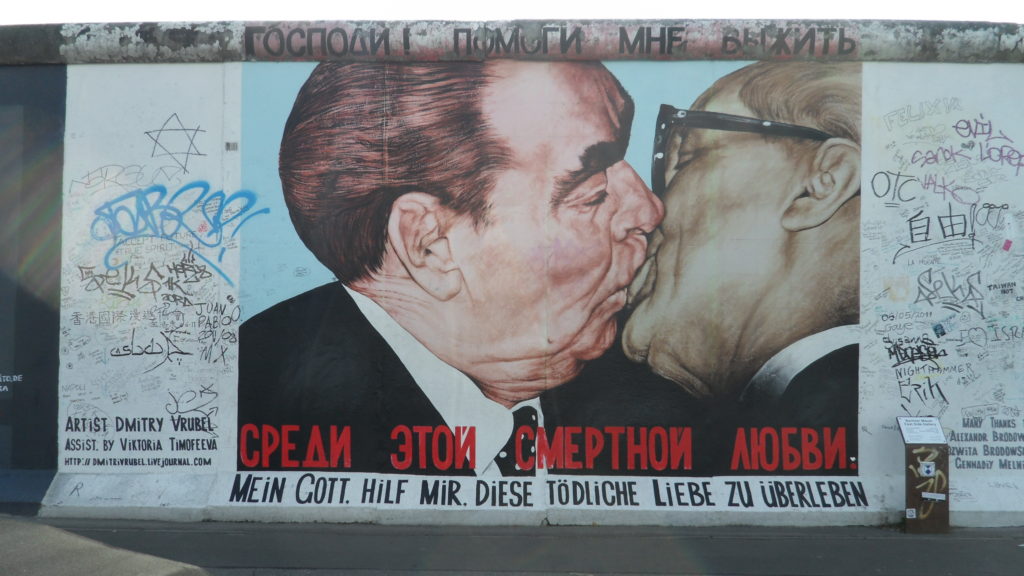
One of the most famous pieces of Berlin history has to be the Berlin Wall. For those of you that are unfamiliar with the historic border allow me to give you a little bit of context. During the Cold War, Germany was divided into two countries: East and West Germany or German Democratic Republic (GDR) in the east and the Federal Republic of Germany (FRG) in the west. The west was controlled by western allied forces (US, UK, France) and the east controlled by the Soviet Union. Berlin, a mostly western controlled area lay in eastern territory. In 1961 the soviets constructed a wall surrounding Berlin (with the exception of a portion of Soviet controlled eastern Berlin) with a concrete and barbed wired wall. This wall completely isolated Berlin, a western city, surrounded by the Soviet controlled east. The wall remained for nearly 30 years until a wave of revolutions in neighbouring eastern countries spread further west to Berlin. In 1990 the wall began its demolition. Today many tourists visiting Berlin may go looking for “the wall” and have a hard time finding it. The wall has been torn down, however, a small portion of the wall has remained and are displayed as an outdoor gallery known as The East Side Gallery. The wall features mostly political murals and street art painted on section afer section. The East Side Gallery can be found in East Berlin in the neighbourhood of Friedrichshain.
Germany’s Parliament is not just a bureaucratic landmark, but also a major attraction in this German capital. Known as the Reichstag, the neoclassical building features a glass dome on top, which offers 360º views of the city and is a draw for many tourists. The building was previously destroyed in a fire during Nazi control and wasn’t until German reunification in the 90s that the building was restored and given the modern twist. Visiting the dome is free of chargem, but you must make a reservation in advance. Tours of Parliament are also available. To register for a visit of the glass dome complete this form on the parliament web site. The Reichstag is located in Mitte, bordering the northeast corner of Tiergarten and is near other Berlin cultural and historical landmarks.
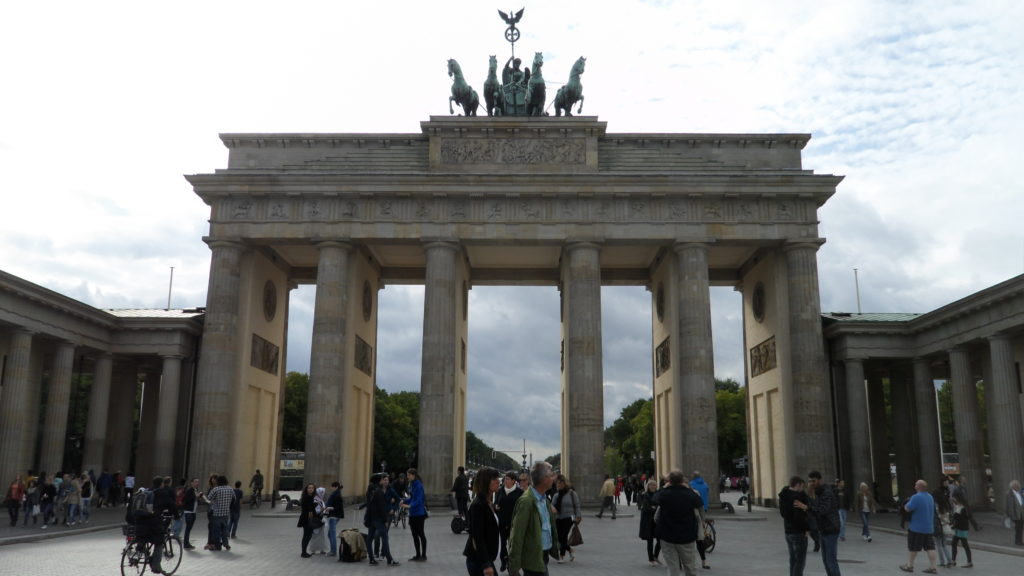
Just down the street south of parliament, you’ll find Berlin’s iconic Brandenburg Gate. This 18th century Athens inspired monument is a former gate of the once fortified city. It has played significant roles throughout the 18th, 19th, and 20th centuries and has been restored many times. With historical significance from Napoleon to the Cold War it remains significant today and acts as a vital social hub including a large New Years gathering, and is a highly visited tourist attraction and iconic German landmark

Continue south from the gate and you’ll come upon the immense public art piece that is the Memorial to the Murdered Jews of Europe. Large concrete slabs erected at varying heights fill the massive 200,000 square foot sloping grid allowing visitors to fully immerse themselves in the memorial. An honour to the 6 million Jews murdered in the holocaust, the memorial has a small museum and information centre attached. The public art piece has been open since 2005 and like most art, many interpretations of its exact meaning and symbolism has yet to be confirmed. Make sure to immerse yourself in this site and connect with your own meaning for this massive piece.
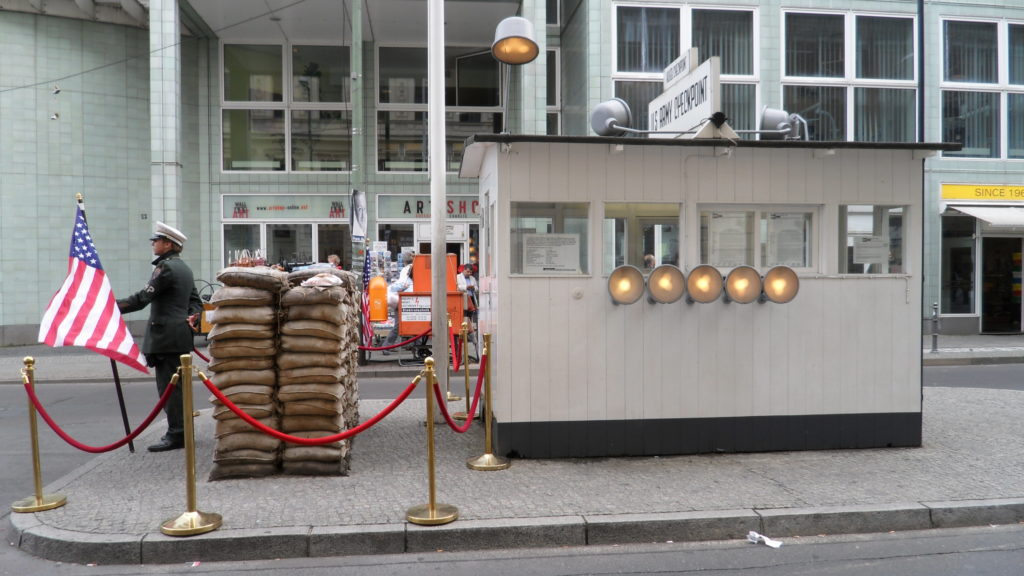
When the Soviets erected Berlin Wall 1961, a border crossing was created dividing the soviet controlled Eastern Germany with allied forces in West Germany and West Berlin. This wasn’t the first checkpoint dividing the two territories, but is the most well-known. Checkpoint C or Checkpoint Charlie has played a significant role in Cold War history. The landmark boundary was a crossing for diplomats, the forefront of US and Soviet military tank standoff, and a point of entry for successful and many more unsuccessful deflectors from Soviet controlled East Germany into West German/West Berlin. After the destruction of the wall and reunification of Germany, the Checkpoint Charlie building has remained and has become a popular tourist attraction.
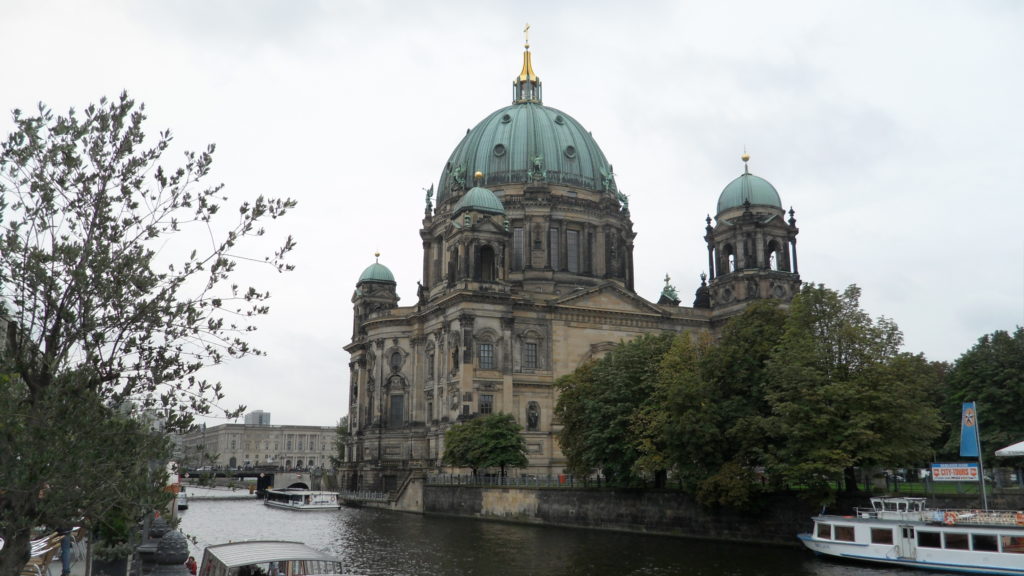
The river Spree runs through a large portion of the city and often divides neighbourhoods and in some areas creates a clear Soviet and Western era division. In Mitte, the city centre, you’ll find an island on Spree river that contains a large number of museums on it’s norther end. This is known as Museum Island. If museums are your thing, you can spend a good portion of your trip in this tiny area of the city. Sitting on the northern tip of the island is the picturesque and easily recognizable Bode Museum. With its large dome, this iconic building is a beacon of Museum Island and sits grandly among the other museums including The Old (Altes) Museum, The New (Neues) Museum, The National Gallery, Pergamon Museum, and more. The museum complex is a UNESCO world heritage site and is accessible by crossing a small cannel by foot. Don’t let the ‘island’ term fool you into thinking you’ll need to take a ferry over, it’s quite a small gap across the canal and river to the mainland.
For a different version of Berlin culture and one not so drenched in Cold War history (okay, maybe a litte), leave the landmarks and museums behind and amp up your night with a visit to one of Berlin’s many techno clubs. Maybe techno nor dance clubs are your thing, and to tell you the truth they’re not my thing either, but when in Rome… or this case Berlin. Berlin is arguably the epicentre of techno and has deep seeded roots in electronic music and club culture. Although techo originated in the US, Germany made it its own and made its capital synonymous with the genre and its subcultures. After the Cold War abandoned buildings were used as clubs as a free-spirited, hedonistic counterculture began to emerge from the rubble of the Berlin Wall. Techno and other similar types of electronic music grew in popularity and is still a vital part of Berlin’s culture. Dance parties rage on until the late hours of the morning or even into the afternoon. This isn’t your 2, 3 or even 4am last call, pack it in, type of entertainment that you’ll find in cities that “never sleep”. Here you’ll spot lineups outside of clubs for people to continue their ‘night’ well into 8am and beyond. One of the most sought after of which is the famous club Bergheim. What was once an old Soviet plant has been converted into a massive entertainment complex offering house and techno to the minority that are welcomed through its threshold. Many spend a good portion of their night in the long line only to be turned away at its doors for – I don’t know, not being cool enough? Behaviour? Aesthetic? Number of people? I don’t know how their rating system works, but somehow I was deemed an acceptable candidate to be granted entry to one of the world’s leading clubs. I must say I’m not much of a club person, but what drew me in was a peek at a unique part of German culture you won’t find anywhere else. Inside, the grand open halls featured two main rooms with DJs performing. Large crowds dancing on floors and platforms illuminated by the lasers that surrounded them all inside what is quite obviously an old industrial plant. Bars tucked away at various parts of the club offered unique refreshments beyond what you’d find in your typical club. Once you realize some people who’ve been partying all night need some serious replenishment, that ice cream freezer and those pre-made sandwiches start to make a bit more sense. Not your typical bar in not your typical club, often not at your typical hour. Bergheim, amongst other clubs in Berlin, offer a truly unique experience to the city’s culture and its origins of techno.
Food & Drink
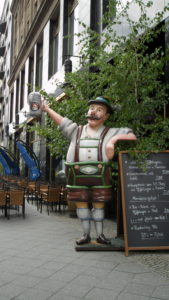
It’s hard not to think of beer when going through the list of Germany’s culturally significant food and drink. Although we’re not in postcard Bavaria where Munich’s golden lager flows freely served by dirndl wearing barmaids, but rather up in the east where Berlin shares taste with their neighbours to the east in Czech Republic and their fondness for pilsner. That isn’t to say you won’t find lagers or weissbiers (white/wheat beers), but the offerings here are more in tune with the east and the north. Local and regional beers like Berliner, Warsteiner, and Erdinger offer different tastes and are all worth sampling. In addition to beer (or bier), radlers are commonly enjoyed in the summer time, the popularity of which we have seen grown here in Canada in recent years. For those of you unfamiliar, radlers are a 50/50 mixture of beer and lemonade. This can be found pre-mixed, canned, and ready to drink alongside the beer you’d find in the local market. It may not be for everyone, but for those looking for something a little different, sweeter, and lighter in the summer time, opt to enjoy a radler over a beer.

It’s no secret that bratwurst is a German staple, however Berlin has a bit of a different offering. Yes, you’ll find wurst everywhere – in restaurants, kiosks, and even whimsically equipped bratwurst vendors on the street which resemble something out of Dr Suess – but in Berlin you’ll often come across it prepared as currywurst. Found in fast food shops and stalls across the city, currywurst is sliced up (pork) bratwurst seasoned with a curry-based tomato sauce. Often served with a side of fries, it’s a Berlin favourite and ubiquitous throughout the city.
Berlin has a large Turkish population, which is reflected in the city’s restaurants, markets, and street food. One of the most popular dishes being a traditional Turkish Doner Kebap. Also known as a kebap, kebab, or doner this hearty sandwich can be found across Europe, but is a staple for Berliners and some of the best you’ll have. You might think of a kebab as a skewer of grilled meat, but this is something entirely different. More lke a shawarma, a doner kebap is comprised of shaved meat off a spit and served with salads, veggies, and sauces as a sandwich on a grilled bun. Much like shawarma, the shaved meat can be offered as chicken, lamb, or other meats. There’s no pita and the sauces are different, but this is comparable to the late-night shawarmas you may be familiar with back home. Now for those thinking of Halifax’s famous Donair, this is similar in both pronunciation and style, but it’s just not the same. A must during your visit in Berlin, you can find this all over the city, and makes for a great lunch or late night snack.
The large Turkish community in Berlin isn’t just reflected in the kebabs. Twice a week in Kreuzberg, a large market offering fresh produce, seafood, sweets, flowers, garments and other items pops up and is known simply as the Turkish Market. The open-air market is an attraction for tourists and locals alike. Whether getting groceries for the next few days or picking up items for a picnic, the Turkish Market is a great spot to check out and try some fresh food. It’s open for the afternoon on Tuesdays and Fridays from 11am and is centrally located canal-side near two U-Bahn stations (see transit below).
Who doesn’t love a doughnut? Germany’s iconic jelly-filled, fried dough pastry is simply known as a Berliner. Covered in powdered sugar, this holeless doughnut is familiar and varied throughout the world. Typically known as a Berliner in Germany or ‘Jelly Donut’ in the west this has pastry many variations throughout Europe. However while inside Berlin the term Berliner seems a bit tried and redundant, so these are called Pfannkuchen. Call them what you will, but it’s an indulgent traditional treat worth having nonetheless.
Pretzels or Brezels are a German staple found throughout the country. It has become a German icon and is no secret why. Back home you may resort to having a soft pretzel at a baseball game or something of the like, but in Germany they’re not just stadium fare. Originating in Germany, pretzels have been sold throughout bakeries for centuries and aren’t just for a quick snack with your beer. Often used to make sandwiches, the pretzels are sliced down the middle and filled with varied deli-meats and cheeses. Enjoyed on a regular basis all year round, it’s a staple in Germany with proud origins.
Transit
Germany’s transportation systems are excellent. Efficient and well-connected, Berlin’s transit is no exception. Berlin is a large sprawling city, but is easy to navigate via public transit. Two main methods of getting around Berlin are the U-Bahn and S-Bahn trains. The U-Bahn is an underground network of 10 lines and 173 stations placed throughout the metropolitan area. This is essentially Berlin’s subway system, but it also links up in many transit hubs throughout the city, connecting with the S-Bahn. The S-Bahn is another rail network that extends outside of the city to a suburban network and acts as a main mode of public transit for those commuting in and out of the city to the surrounding areas.
Berlin currently has two main airports, with a third currently under construction slated to open in 2020. As of now you’ll arrive and depart from either Schönefeld (SXF) or Tegel (TXL) if traveling by air. Both are international airports, but Schönefeld (SXF) is typically used for small, budget airlines and Tegel (TXL) for larger international ones. Despite Germany’s excellent public transportation, getting to or from the city centre and airport is not as seamless as other cities, or at least not from Tegel (TXL). From here you can take public transit either by bus into town or a train to Berlin’s central train station (Hauptbahnhof), the latter of which is designed more for those connecting to other cities at the train station. If public transport isn’t for you a taxi will cost a bit more than 30€. All methods can take you about half an hour to get in to town, with the train and taxi being slightly quicker alternatives to the bus. Schönefeld airport (SXF), however, has a very efficient train connected to the S-Bahn network making it very easy to get anywhere in Berlin. With two international airports and a third on its way, remember to check your ticket and airline and make sure which airport you’re flying in or out of.
European rail travel is a common, efficient, and effective way to get around the continent. Berlin’s central train station is known as Berlin Hauptbahnhof and is centrally located in Mitte just north of the Reichstag and northeast corner of the Tiergarten opposite the river Spree. The large, central transit hub has lots of shopping and dining options and is your main gateway into/out of Berlin if traveling by rail. Berlin Hauptbahnhof is conveniently connected to both the U-Bahn (subway) and S-Bahn (suburban rail) lines making it easy to get to or from your hotel or hostel within any part of Berlin or the surrounding area. Both the U-Bahn and S-Bahn stop is simply called “Hauptbahnhof” and are well integrated into Berlin’s transit system.
Like a lot of cities, the Berlin Central Bus Station (ZOB) is tucked away in the outskirts of the city in the west end, just west of Charlottenberg. The bus terminal, like the mode of transport itself, is basic and modest. This is the more economical mode of travel and only at times are worth the savings. The bus is a popular choice for simple and short international routes such as travel to Prague. Although ZOB is the central terminal, depending on your bus route and company at times you can depart from more convenient, central locations such as Alexanderplatz. Check with your bus company for details.
